| Recent Featured Videos and Articles | Eastern “Orthodoxy” Refuted | How To Avoid Sin | The Antichrist Identified! | What Fake Christians Get Wrong About Ephesians | Why So Many Can't Believe | “Magicians” Prove A Spiritual World Exists | Amazing Evidence For God | News Links |
| Vatican II “Catholic” Church Exposed | Steps To Convert | Outside The Church There Is No Salvation | E-Exchanges | The Holy Rosary | Padre Pio | Traditional Catholic Issues And Groups | Help Save Souls: Donate |  |

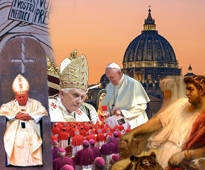
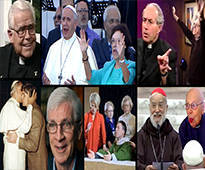
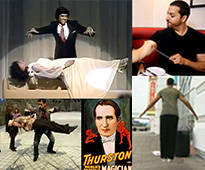
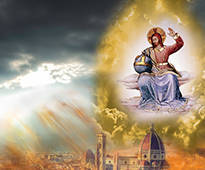

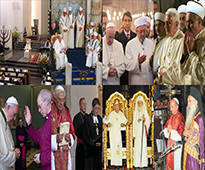


 " />
" />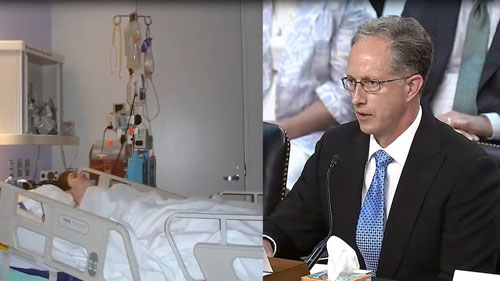 " />
" /> " />
" /> " />
" /> " />
" />




The 1917 Code of Canon Law
John 3:5 Mockers Stumped (1917 Code, Delayed Ensoulment, “Baptism Of Desire”)
THE VIDEO ABOVE IS A MUST-SEE VIDEO ON THIS MATTER
OBJECTION- The 1917 Code of Canon Law gives Christian Burial to unbaptized catechumens and teaches baptism of desire.
ANSWER- As we’ve pointed out before, the 1917 Code of Canon Law is not infallible. The 1917 Code was definitely not an ex cathedra (from the Chair of Peter) pronouncement because it does not bind the whole Church, but only the Latin Church (not the Eastern Rites), as stipulated in Canon 1 of the 1917 Code.
A pope speaks infallibly from the Chair of Peter when his teaching on faith or morals binds the entire Church, which the 1917 Code doesn’t:
Thus, the 1917 Code’s proposition in canon 737 that Baptism is necessary “at least in desire” for salvation is not binding on the universal Church or protected by infallibility. That statement is also a novelty. It contradicts the Church's professions of faith and the teaching that was in the Roman Ritual for centuries. Those documents taught that the Sacrament of Baptism is necessary for salvation, not "at least in desire." For instance, see this video: https://endtimes.video/roman-ritual-baptism/
Regarding its law in canon 1239, that unbaptized catechumens can be given Christian burial, this contradicts the Tradition of the Catholic Church from ancient times on whether unbaptized persons can be given Christian burial.
The Tradition of the Catholic Church was to refuse ecclesiastical burial to catechumens who died without the Sacrament of Baptism, as The Catholic Encyclopedia admits:
This law of the Catholic Church is connected to the principle (which was articulated by Pope St. Leo the Great and Pope St. Gregory VII) that we cannot hold communion after death with those with whom we did not communicate during life.
The Code, however, teaches that communion should be held after death with those with whom the Church did not communicate during life (i.e. the unbaptized). It thus contradicts the official teaching of the Church, as expressed above.
The 1917 Code is wrong and not infallible, and the Catholic Church’s law for all of history refusing ecclesiastical burial to unbaptized catechumens is correct. In fact, it is interesting to note that in a famous compilation of sources for the 1917 Code many footnotes are given to show the basis for various canons. Canon 1239.2 on giving ecclesiastical burial to unbaptized catechumens has no footnote, not to any pope, previous law or council, simply because there is nothing in Tradition which supports it!
The Catholic Encyclopedia (1907) quotes an interesting decree from Pope Innocent III wherein he commented on the traditional law of the Catholic Church from the beginning which refused ecclesiastical burial to all who died without the Sacrament of Baptism.
The 1917 Code is not infallible Church discipline either because it was not "imposed upon all". Discipline is guaranteed to be free from error if it binds everyone in the Church.
This would mean that a disciplinary law is not a law of the “Catholic” (i.e. universal) Church unless it binds the universal Church. Regardless, the 1917 Code doesn’t enjoy infallibility. This is further proven by the following canons.
1) The 1917 Code teaches that heretics can be in good faith.
A heretic, by infallible definition, is of bad faith and brings down upon his head eternal punishment. In fact, the Code itself defines a heretic as one who pertinaciously denies or doubts a dogma (and is therefore necessarily of bad faith).
A person in good faith who is erring innocently about a dogma (loosely and improperly called a “material heretic” in theological discussions) is not a heretic, but a Catholic erring in good faith. So the statement in the 1917 Code about heretics and schismatics in good faith is definitely theologically erroneous and it proves that it was not protected by infallibility.
The actual Bull promulgating the 1917 Code, Providentissima Mater Ecclesia, was not signed by Benedict XV, but by Cardinal Gasparri and Cardinal De Azevedo. Cardinal Gasparri, the Secretary of State, was the main author and compiler of the canons. That's interesting, but it need not form an important basis of one's argument.
2) The 1917 Code teaches that Catholics may be present at non-Catholic forms of worship, including non-Catholic weddings and non-Catholic funerals.
Note: this canon is not talking about Catholic masses or Catholic worship presided over by a heretic, but non-Catholic or non-Christian (false) worship and rites. Some believe this canon allows one to travel to and attend a Jewish synagogue or a Buddhist temple or a Lutheran service, etc. for the wedding or funeral of infidels or heretics, provided that one doesn’t actively participate! That is a problem, for to go out of one's way to be present at such non-Catholic services where false worship is conducted (for the sake of honoring or pleasing the person involved in it) is a scandal in itself. It is to honor a person who is sinning against the First Commandment. To go to the funeral of a non-Catholic is to imply that there was some hope for him for salvation outside the Church. To attend the wedding of a non-Catholic is to imply that God condones his or her marriage outside the Church. A Catholic can neither take part actively in false worship nor go out of one’s way to travel to the false worship or the non-Catholic ceremony to honor it with his “passive” presence.
The 1917 Code is not infallible. It contradicts the teaching of the Catholic Church on ecclesiastical burial and that we cannot communicate after death with those with whom we did not communicate with during life. It holds no weight against the infallible declaration of the Chair of St. Peter (binding the entire Church) that no one can enter heaven without the Sacrament of Baptism.
[1] The 1917 Pio-Benedictine Code of Canon Law, translated by Dr. Edward Von Peters, Ignatius Press, 2001, Canon 1, p. 29.
[2] Denzinger 1839.
[3] The 1917 Pio-Benedictine Code of Canon Law, p. 451.
[4] The Catholic Encyclopedia, “Baptism,” Volume 2, 1907, p. 265.
[5] The Catholic Encyclopedia, “Baptism,” Volume 2, 1907, p. 267.
[6] The Papal Encyclicals, Vol. 4 (1939-1958), p. 50.
[7] Decrees of the Ecumenical Councils, Vol. 1, p. 74.
[8] Denzinger 714.
[9] The Papal Encyclicals, Vol. 1 (1740-1878), p. 229.
[10] Denzinger 861; Decrees of the Ecumenical Councils, Vol. 2, p. 685.
Sign up for our free e-mail list to see future vaticancatholic.com videos and articles.
Recent Content
^